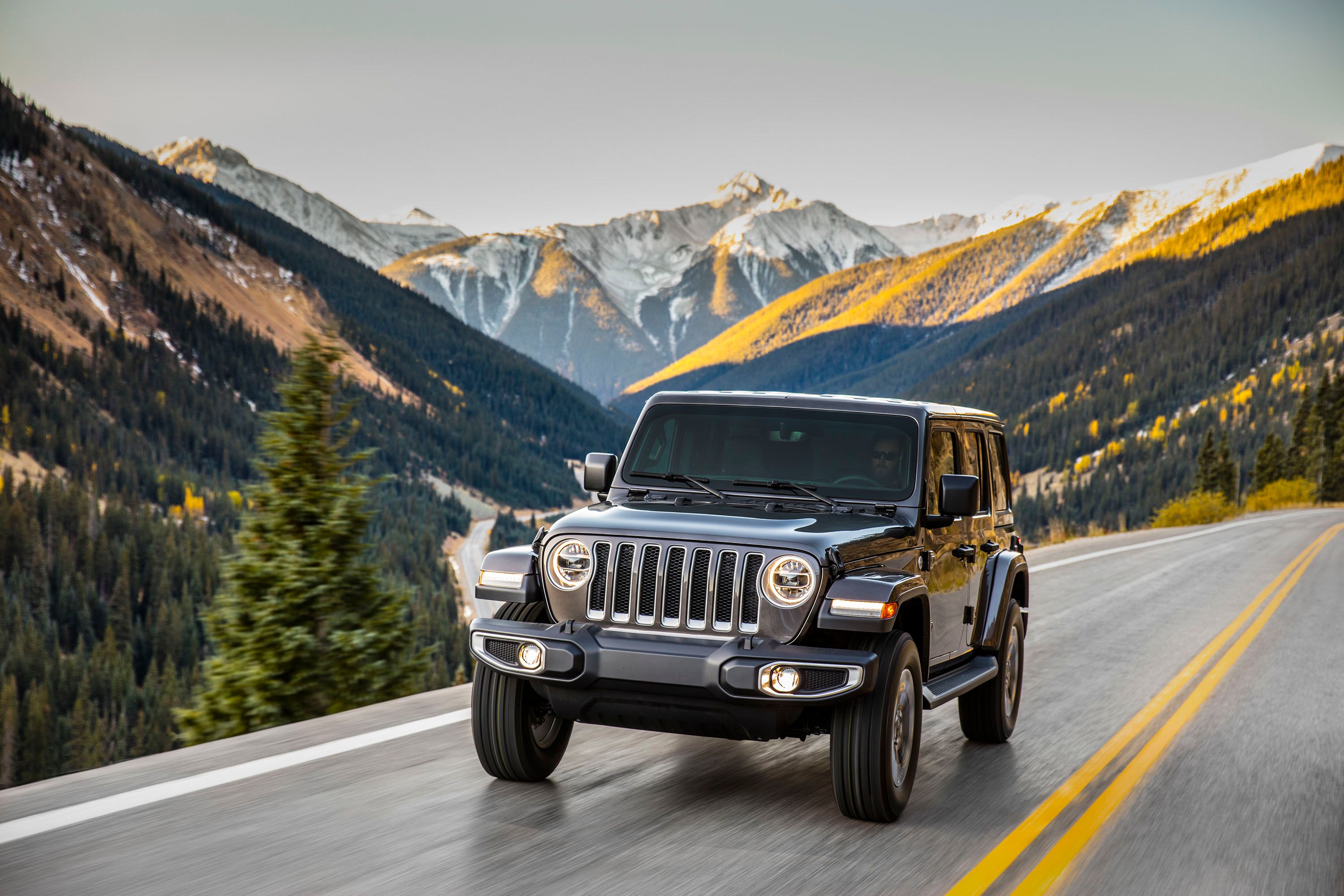Those new to the Jeep brand might gawk at a four-cylinder Wrangler, but the Jeep has a strong history with this cylinder count. In fact, the first Jeep, the 1941 Willys MB, came with a four-cylinder. Four-cylinders were offered through the years, with the most recent being in the 1997-2006 Wrangler TJ. In fact, the outgoing Wrangler JK is the only Wrangler/CJ not available with one. That makes the return of a four-cylinder sort of a retro move. Even the engine’s name (Hurricane) is a throwback to older days
The new engine shares nothing with the old Hurricane, of course. It’s a member of FCA’s Global Medium Engine family and is loosely related to Alfa Romeo’s 2.0-liter found in Giulia sedan and Stelvio crossover. In the Wrangler, the Hurricane makes an impressive 270 horsepower at 5,200 rpm and 295 pound-feet of torque at only 3,000 rpm. That torque number actually beats the output of the 3.6-liter V-6 by 35 pound-feet! Better still, the Hurricane makes its power lower in the rev range, likely making it a better choice for serious off-roading. Horsepower-wise, the Hurricane only gives up 15 ponies to the V-6.
The natural trade-off is fuel economy. Neither Jeep nor the EPA have announced official numbers, but expect to see upper 20s on the highway, lower 20s around town, and a combined mpg of around 25.
The Hurricane’s secret is its mild hybrid system. The engine uses a belt-starter-generator to help twist the engine’s crankshaft at lower revs. The system is also designed to provide better auto stop/start performance while also improving low-end throttle response before the turbo spools up.
Impressively, the turbo-four loses no ground in the towing department to the V-6. Jeep says the two-door Wrangler will tow 2,000 pounds and the four-door Wrangler Unlimited will lug 3,500 pounds – regardless of engine choice. Sadly for manual transmission fans, the Hurricane is only offered with the new eight-speed automatic.
The Hurricane will be available in all trim levels from the base Sport, to the luxury-minded Sahara, and even the rugged Rubicon. Pricing has not been announced, but the Hurricane will be an option over the standard 3.6-liter V-6.
Continue reading for detailed specs on the 2.0-liter Hurricane turbo-four.
2.0-LITER TURBO I-4 - Specifications
|
ENGINE |
2.0-LITER TURBO I-4 |
|
Availability |
Available — all models |
|
Type and Description |
I-4 16-valve with direct injection, turbo charging, with throttled, cooled EGR |
|
Displacement (cu. in. / cc) |
121 cu. in. (1995 cu. cm) |
|
Bore x Stroke |
3.31 x 3.54 (84 x 90) |
|
Valve System |
Chain-driven DOHC, 16 valves |
|
Fuel Injection |
Direct Injection |
|
Construction |
Aluminum block, aluminum alloy heads |
|
Compression Ratio |
10:01 |
|
Power |
270 HP @ 5,250 RPM |
|
Torque |
295 LB-FT @ 3,000 RPM |
|
Max. Engine Speed (rpm) |
5,800 rpm (electronically limited) |
|
Fuel Requirement |
Minimum unleaded regular, 87 octane (R + M)/2, 91 octane or higher recommended for optimum fuel economy and performance |
|
Fuel Tank Capacity (gallons) |
18.5 (2-door), 21.5 (4-door) |
|
Oil Capacity |
5 quarts (4.7 liters) |
|
Coolant Capacity |
9.9 quarts (9.4 liters) |
|
Emission Controls |
GPEC4 engine-management system with close-coupled catalyst; and wide range O2 sensor |
|
Max. Gross Trailer Weight |
2,000 lbs. (2-door), 3,500 lbs. (4-door) |
|
EPA Fuel Economy mpg (city/hwy/combined) |
TBD — automatic (2-door); TBD — automatic (4-door) |
|
Assembly Plant |
Termoli, Italy and Trenton South Engine Plant, Trenton, Mich. |
References
2018 Jeep Wrangler
Read our full review on the 2018 Jeep Wrangler.
2017 Jeep Wrangler
2}Read our full review on the JK-gen 2017 Jeep Wrangler
Read more 2017 Los Angeles Auto Show news.

